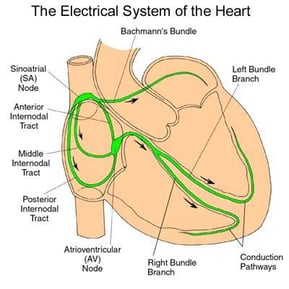During
Placing a pacemaker/ICD is done in the hospital. It is either short-stay surgery or done in the cardiac catheterization or electrophysiology lab. Your child will be given medicine to help them relax.
In older children and teenagers who receive a pacemaker, a small cut is made just under the collarbone. The pacemaker/ICD wires are inserted into the heart through a blood vessel. This procedure is usually performed in the catheterization laboratory.
In younger children, the pacemaker may be placed into the belly through a small cut. A second cut is made in the chest so the doctors can see the heart. The wires are guided to the heart and placed on its surface. This is usually done in the operating room. Once the surgery has been finished, your child will go to a room to recover. This normally lasts several hours. In most cases, your child can go home the next day.
After
You will receive a card that has info about your child's model of pacemaker and the serial number. You should always carry this card with you. It’s important that any health care provider who sees your child has this information. A medical identification bracelet or necklace can also be worn by your child to alert others about the pacemaker or ICD in case of emergency.
Once the pacemaker has been implanted, your child should be able to do the same activities as everyone else in their age group. Some precautions are needed around certain electronic or magnetic devices, as these may cause interference with the pacemaker or ICD.
Although your child's pacemaker is built to last several years, check it often to make sure it is working. The right method for checking the accuracy of your pacemaker includes:
- Take your child's pulse to make sure the pacemaker is keeping it at the targeted rate.
- Do a telephone check-up of your child's pacemaker on a regular basis.
- See your child's physician for check-ups.
- Report any symptoms to your child’s care team.





